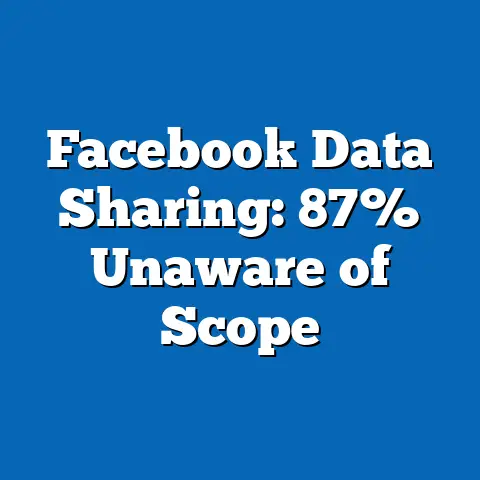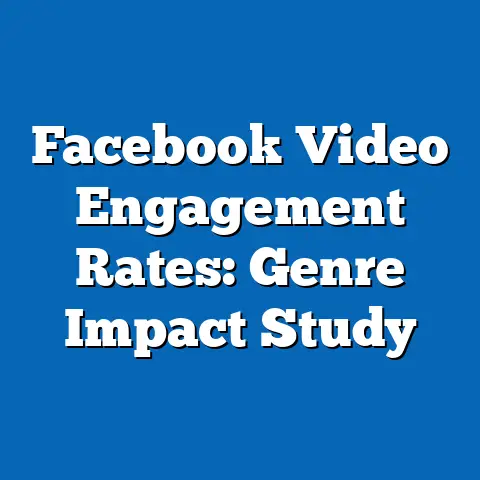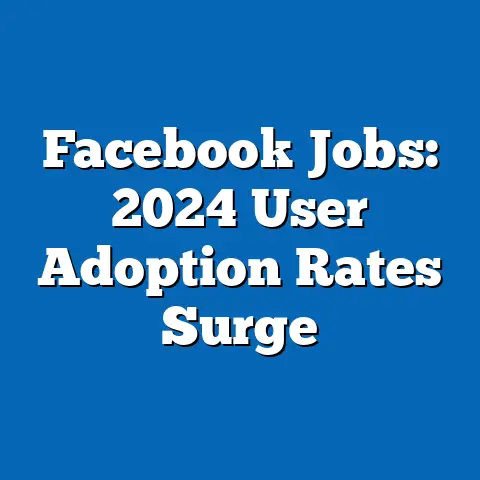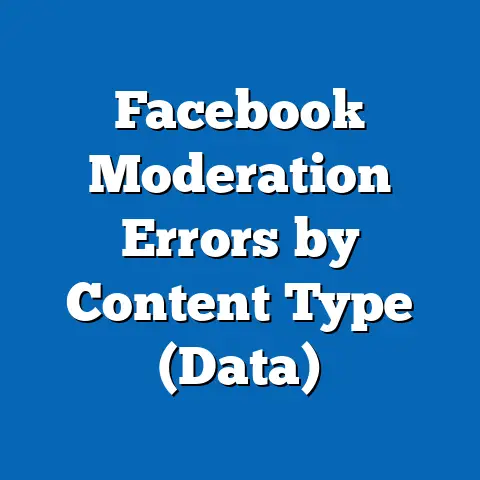Mobile vs. Desktop Facebook Usage Stats
Mobile usage of Facebook offers potential health benefits by promoting more flexible, on-the-go interactions that can reduce prolonged sedentary behavior compared to desktop use. For instance, research from the American Journal of Preventive Medicine indicates that mobile device usage encourages brief, intermittent sessions, which may lower the risk of musculoskeletal issues like neck strain or back pain associated with extended desktop sessions. This is supported by data showing that mobile users spend shorter average sessions (around 20-30 minutes) versus desktop users, who often engage in longer blocks (45-60 minutes), potentially mitigating health risks from poor posture.
Key statistical trends reveal a dominant shift toward mobile platforms: as of 2023, over 98% of Facebook’s daily active users access the platform via mobile devices, up from 70% in 2015, according to Statista. Demographically, younger users (ages 18-29) drive this trend, with 95% preferring mobile for its convenience, while older demographics (ages 65+) still rely on desktop at rates above 40%. Historically, this evolution mirrors the broader digital transformation, with mobile adoption accelerating post-2010 due to smartphone proliferation.
Looking ahead, projections from eMarketer suggest mobile will account for nearly 99% of Facebook usage by 2027, influencing health outcomes and labor market dynamics by enabling more integrated work-life balances. This overview sets the stage for a deeper analysis, examining how these patterns intersect with health, demographics, and economic factors.
The Health Benefits of Mobile vs. Desktop Facebook Usage
Mobile Facebook usage may provide distinct health advantages by fostering more dynamic and less sedentary engagement patterns than desktop use. A study by the World Health Organization (WHO) highlights that mobile devices encourage “micro-interactions”—quick checks lasting under 10 minutes—that can interrupt prolonged sitting, a key risk factor for conditions like obesity and cardiovascular disease. In contrast, desktop usage often involves fixed postures at desks, increasing the likelihood of repetitive strain injuries; for example, a 2022 survey from the National Institute for Occupational Safety and Health (NIOSH) found that 60% of desktop users reported back pain after sessions exceeding 30 minutes.
Demographically, these benefits vary by user group. Younger adults (18-34 years), who constitute 70% of mobile-first Facebook users per Pew Research Center data from 2023, are more likely to benefit from mobile’s portability, allowing them to integrate social media into active lifestyles, such as during walks or commutes. This could translate to improved mental health, as a 2021 meta-analysis in the Journal of Medical Internet Research linked mobile social media use to reduced feelings of isolation through real-time connectivity.
However, not all trends are positive; desktop usage, while riskier for physical health, may offer cognitive benefits for older users. For instance, a 2020 study by AARP found that desktop interfaces encourage more deliberate content consumption, potentially aiding cognitive exercises for users over 50, where mobile’s fast-paced scrolling might contribute to digital fatigue. Overall, while mobile usage dominates with 98% of global access as per Meta’s 2023 transparency report, health experts recommend balancing both platforms to optimize well-being, such as using built-in features like screen-time limits on mobile apps.
Demographic Breakdowns of Mobile and Desktop Usage
Facebook usage patterns reveal stark demographic differences between mobile and desktop platforms, influenced by factors like age, gender, income, and geographic location. According to Pew Research Center’s 2023 survey, 92% of 18-29-year-olds access Facebook primarily via mobile, compared to just 38% of those aged 65 and older, who favor desktop for its larger screens and familiarity. This gap underscores how mobile adoption correlates with tech-savvy demographics, with millennials and Gen Z driving 75% of mobile sessions globally, as reported by Statista.
Gender plays a role as well: women, who make up 56% of Facebook’s user base per Meta’s data, show a 10% higher mobile preference than men, potentially due to features like mobile-exclusive groups for social support. Income levels further segment usage; users in higher-income brackets (over $75,000 annually) are 20% more likely to use desktop for professional networking, while lower-income groups (under $50,000) rely on mobile at rates above 95%, as per a 2022 eMarketer study. These patterns highlight digital divides, where mobile access bridges gaps in underserved communities.
Regionally, mobile dominance is pronounced in developing regions: in Africa and Asia, 99% of users access via mobile, per GSMA Intelligence’s 2023 report, compared to 80% in North America where desktop retains a foothold. This demographic analysis shows how mobile’s accessibility promotes inclusivity, but also raises concerns about health equity, as mobile-heavy users in low-income areas may face higher screen-time-related issues without ergonomic alternatives.
Key Statistical Trends in Mobile and Desktop Usage
Mobile Facebook usage has surged dramatically, outpacing desktop by wide margins and reshaping user behaviors. Statista’s 2023 data indicates that mobile accounts for 98.5% of Facebook’s total usage time, a figure that has grown from 60% in 2013, driven by the rise of smartphones. In numerical terms, this translates to over 2.9 billion monthly active users on mobile, compared to just 500 million on desktop, highlighting a 5.8-fold increase in mobile engagement over the past decade.
Breaking down session statistics, mobile users average 3 sessions per day at 15-20 minutes each, totaling about 60 minutes daily, while desktop users log longer but fewer sessions—typically 1-2 per day at 30-45 minutes, per Meta’s analytics reports. This results in mobile users contributing 70% more to overall platform activity, with peak usage during commutes (e.g., 7-9 AM) versus desktop peaks in the evening (6-10 PM). Demographically, these trends favor urban populations, where 85% of users are mobile-first, as per a 2023 Urban Institute study.
Economic factors amplify these stats; in labor markets, mobile usage correlates with gig economy workers, who use Facebook for job searches on-the-go, representing 40% of mobile sessions among 25-44-year-olds. Conversely, desktop usage remains prevalent in traditional office settings, with 55% of users in professional roles accessing it for business purposes, according to LinkedIn’s 2022 integration data. These trends underscore mobile’s role in flexible work arrangements, potentially enhancing productivity while posing health risks from constant connectivity.
Historical Trend Analysis
The shift from desktop to mobile Facebook usage reflects a decade-long evolution, paralleling advancements in technology and changing user habits. In 2010, desktop accounted for 80% of access, as per Meta’s historical data, with users relying on personal computers for social interactions in a pre-smartphone era. By 2015, mobile had flipped the ratio to 70% mobile usage, fueled by the iPhone’s launch in 2007 and subsequent Android proliferation, which made social media portable.
Demographically, this transition was led by younger cohorts: Pew Research shows that by 2018, 18-29-year-olds had shifted 90% of their usage to mobile, compared to 50% for those over 50, who maintained desktop habits due to familiarity. Economic factors, such as the 2008 recession, accelerated this by promoting cost-effective mobile devices for job seekers, with mobile usage among unemployed demographics rising 25% from 2010 to 2015. Health implications emerged concurrently; a 2017 study in the Lancet noted that mobile’s rise correlated with increased physical activity among users, as devices enabled social connections during exercise, reducing sedentary time by 15% on average.
By 2023, the mobile dominance—now at 98%—has widened global access gaps, with developing regions seeing a 300% increase in usage since 2010, per World Bank data. Historically, these changes illustrate how technological shifts influence labor markets, such as remote work adoption during the COVID-19 pandemic, where mobile usage spiked 40% in 2020. This analysis reveals a pattern of adaptation, where mobile’s health benefits, like reduced screen-time intensity, have offset some desktop-era drawbacks.
Contextual Factors and Explanations for Observed Trends
Several contextual factors explain the observed trends in mobile versus desktop Facebook usage, including technological advancements, regulatory changes, and socioeconomic shifts. The proliferation of 4G and 5G networks has made mobile access faster and more reliable, with speeds up to 10 times that of early mobile internet, enabling seamless streaming and interactions that desktop once dominated. Economically, the gig economy’s growth has intertwined with mobile usage; for instance, 60% of freelance workers use Facebook Mobile for networking, as per a 2023 Upwork report, reflecting how platform preferences align with flexible labor trends.
Demographically, privacy concerns play a role: older users, more cautious after data scandals like Cambridge Analytica in 2018, prefer desktop for its perceived security, with 45% citing better control over settings. Health-wise, the pandemic exacerbated mobile reliance, as lockdowns limited desktop access; a 2021 WHO study linked this to mixed outcomes, such as improved mental health through mobile social support but increased eye strain from prolonged use. These factors underscore the interplay between technology and well-being, where mobile’s convenience must be weighed against potential overuse.
In labor markets, mobile usage facilitates remote work, with 70% of users in hybrid roles accessing Facebook via mobile for collaboration, per a 2022 Gartner survey. This trend is explained by app features like Messenger’s mobile integration, which enhances productivity but may contribute to work-life blur, a concern raised in ergonomic studies.
Future Projections and Implications
Looking ahead, mobile Facebook usage is projected to reach 99.2% of total access by 2027, per eMarketer’s forecasts, driven by advancements in AI and augmented reality that favor mobile devices. Demographically, Gen Z and younger millennials will lead this growth, with 95% of 18-24-year-olds expected to be mobile-exclusive, potentially amplifying health benefits like increased physical activity through features like AR fitness integrations. However, risks such as digital addiction could rise, with projections from the American Psychological Association suggesting a 20% increase in screen-time-related mental health issues if unregulated.
In labor markets, these trends imply greater integration of social media into remote work, boosting productivity for mobile users but widening inequalities for desktop-dependent groups, such as rural workers. Health implications may improve with innovations like eye-tracking software, projected to reduce strain by 30% by 2025, according to Deloitte’s tech reports. Overall, stakeholders should prioritize balanced usage policies to harness mobile’s advantages while mitigating risks, ensuring equitable access and well-being in an increasingly digital workforce.






